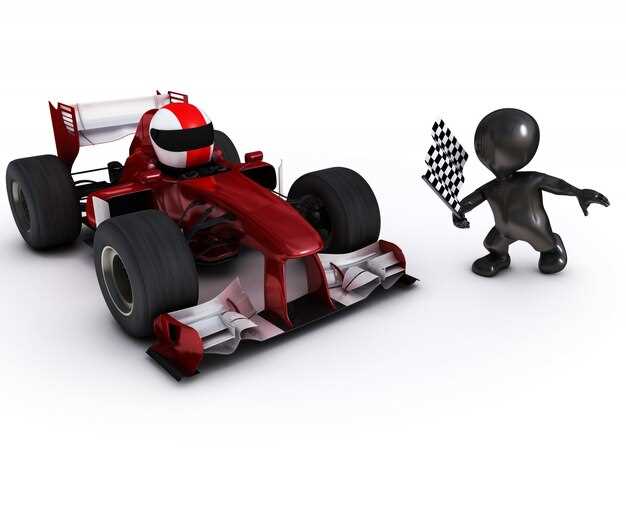
Understanding the cost associated with building a competitive race car is crucial for anyone looking to enter the world of motorsport. The overall pricing of a race car can vary significantly based on numerous factors, such as the type of racing, the level of competition, and the specific components required for optimal performance. In this article, we will delve into the various elements that contribute to the total expense of a race car, offering insights into how each component impacts the overall budget.
From the chassis and engine to the tires and safety equipment, each aspect of a race car is designed with precision and performance in mind. It’s essential to consider not just the initial outlay but also the ongoing costs associated with maintenance, repairs, and upgrades. Furthermore, understanding the pricing dynamics in the racing industry can provide aspiring racers with a clearer picture of what to expect when investing in their passion.
The decision to enter competitive racing involves more than just passion; it requires a well-planned financial strategy. By analyzing the cost structures and the factors influencing pricing, enthusiasts can make informed decisions that could significantly impact their success on the track.
Understanding the Base Price of Race Cars
The base price of race cars is a crucial aspect for teams and enthusiasts alike, as it provides a clear indication of what to expect when entering the competitive racing world. This pricing reflects the fundamental costs associated with the design, manufacturing, and technology integrated into the vehicles. A typical race car’s base price can vary significantly depending on the category, from grassroots levels to professional tiers.
A detailed breakdown of the base price often includes various components such as the chassis, engine, suspension, and aerodynamics. The chassis, being the skeleton of the car, requires advanced materials like carbon fiber or aluminum to ensure both strength and lightweight characteristics. The engine plays a pivotal role in performance, where the pricing can be driven up by the use of high-performance parts and specific tuning to meet competitive standards.
Additionally, the suspension system involves sophisticated engineering to ensure optimal handling and stability at high speeds. The aerodynamics package often includes specialized bodywork designed to reduce drag and enhance downforce, which can further increase costs. Each of these components contributes to the overall base price, making it essential for teams to understand the different elements that influence their investment.
Furthermore, the base price does not account for the additional expenses that come with owning and operating a race car. These may include ongoing maintenance, tire replacement, fuel, and other operational costs. Therefore, analyzing the base price in conjunction with these factors provides a comprehensive understanding of the financial commitment required in competitive racing.
Breaking Down Components and Their Expenses

In the world of competitive racing, understanding the cost breakdown of various components is crucial for teams looking to optimize performance while managing their budgets. Each part of a race car contributes to its overall efficiency and speed, and knowing the financial implications of these components is essential for any racing organization.
Firstly, the chassis is the backbone of any race car and typically represents a significant portion of the overall budget. High-performance materials, such as carbon fiber and aluminum, can increase durability and reduce weight but come at a premium. The cost of a competitive chassis can range from $20,000 to $100,000, depending on the technology used and the specific design tailored for the racing series.
Next, the powertrain, which includes the engine and transmission, is another critical area where costs accumulate. High-end engines engineered for racing can cost anywhere between $50,000 and $300,000. The complexity of the drivetrain also influences expense levels, as specialized gearboxes and differential systems designed for optimal performance on the track can add another $20,000 to $50,000 to the budget.
Braking systems are vital for safety and performance, with costs varying significantly based on the materials and technology employed. A standard high-performance braking system may start around $10,000, while advanced carbon-carbon brakes can escalate costs to upwards of $30,000, providing superior performance under high-stress conditions.
Suspension components play a major role in handling and stability, and a well-designed suspension system can be a game-changer on the track. The breakdown of costs for racing suspension systems generally ranges from $10,000 to $50,000, influenced by the choice of shock absorbers, springs, and control arms that provide precision control during races.
Finally, tires are often an overlooked aspect of expense management in competitive racing. Regularly changing tires to maintain grip and performance can lead to a substantial yearly cost, with quality racing tires priced between $1,000 and $3,000 per set. With multiple sets required for a season, these costs can quickly escalate.
In conclusion, the breakdown of components and their associated costs plays a pivotal role in shaping a team’s competitive strategy. By thoroughly analyzing these expenses, racing teams can make informed decisions that balance performance enhancements with budget constraints, ultimately aiming for success on the track.
Ongoing Maintenance Costs and Budgeting for Upgrades

Ongoing maintenance costs for a competitive race car can significantly impact the overall budget. A thorough breakdown of these expenses is essential for any racing team or individual racer. Key components include regular inspections, tire replacements, brake maintenance, and fluid changes. Depending on the level of competition, these costs can vary widely, so it is crucial to estimate them accurately.
Tires are one of the most significant expenses, with high-performance options requiring frequent replacement due to wear from the intense racing conditions. Depending on the circuit and driving style, teams may need to invest in new tires after every race or multiple times during a single event.
Brakes also play a crucial role in maintenance costs. High-performance brake systems, while necessary for competitive racing, can wear out quickly and demand replacement or servicing after a limited number of laps. Regular monitoring and budgeting for these replacements are essential for maintaining competitive performance.
Fluid maintenance, including oil, coolant, and transmission fluids, is another critical aspect of ongoing costs. Regular changes help prevent engine damage and ensure optimal performance. The frequency of these changes will depend on the specific car and racing conditions, making it vital to plan and budget accordingly.
Budgeting for upgrades is equally important and should be incorporated into the overall cost analysis. As technology advances, racers often need to invest in improved components to stay competitive. This might include upgrading the engine, suspension, or aerodynamics. Setting aside funds for these upgrades can make the difference between winning and losing races over a season.
In conclusion, maintaining a competitive race car involves ongoing costs that require careful planning and strategic budgeting for necessary upgrades. By understanding the full breakdown of expenses, racers can better manage their finances and ensure they are well-prepared for both routine maintenance and future enhancements.




